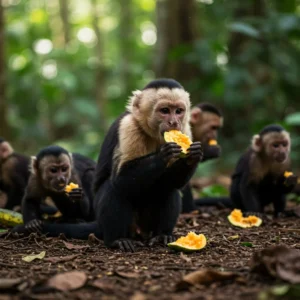With St. Patrick’s Day right around the corner, we thought it’d be fun to dig into some cool facts about the holiday’s star symbol: the clover. And trust us, there’s more to this little plant than meets the eye!
First off, did you know there are over 250 different types of clovers? Some are perennials, meaning they stick around year after year, while others are annuals, completing their life cycle in just one year—it all depends on the species. Their flowers are tiny but plentiful, creating this cute effect like mini bouquets. And the colors? They range from white and yellow to red or even purple, so there’s a lot of variety!
One of their superpowers (yes, clovers have superpowers!) is their ability to enrich the soil with nitrogen. This happens thanks to a symbiotic relationship with bacteria called Rhizobium that live in their roots. This nitrogen-fixing trick makes clovers a game-changer for soil fertility, and they’re a farmer’s best friend when it comes to sustainable agriculture.
On top of that, clovers are a tasty snack for all sorts of herbivores—think rabbits, deer, and livestock. But it’s not just the grazers that love them; their pretty flowers attract pollinators like bees and butterflies, playing a big role in supporting biodiversity.
Now, you might be wondering, “What’s all this got to do with St. Patrick’s Day?” Well, let’s hop in the time machine and go back to the 5th century. St. Patrick, the patron saint of Ireland, was on a mission to spread Christianity. To explain the concept of the Holy Trinity (Father, Son, and Holy Spirit) to the Irish pagans, he used the three-leaf clover, or Shamrock. Each leaf represented one part of the Trinity, but together, they formed a single unit—kind of like how God is both three and one. Pretty clever, right? That’s how the Shamrock became a powerful symbol of Christian faith in Ireland.
Fast forward to today, and St. Patrick’s Day has grown way beyond its religious roots. It’s now a global celebration of unity, not just faith. In Ireland and Irish communities worldwide, the Shamrock is often given as a gift, symbolizing good luck and a connection to Celtic culture.
And here’s a fun bonus fact, even if it’s not directly tied to the holiday: everyone’s heard that finding a four-leaf clover brings good luck. And who knows, maybe there’s something to it! But finding one is super rare—like spotting a unicorn rare—with odds of about 1 in 10,000. Spoiler alert, though: it’s not magic, it’s just a genetic mutation. So, if you’re lucky enough to find one, remember—it’s science, not sorcery!
There you have it, a little crash course on clovers and their connection to St. Patrick’s Day. Whether you’re celebrating with a Shamrock in hand or just enjoying the festive vibes, now you’ve got some fun trivia to share. Cheers to that! 🍻
References:
Hatch, S.L., K.N. Gandhi, and L.E. Brown. 1990. Checklist of the vascular plants of Texas (MP-1655). Texas Agricultural Experiment Station, College Station.
Encyclopædia Britannica, inc. (2025, February 25). St. Patrick. Encyclopædia Britannica. https://www.britannica.com/biography/Saint-Patrick
S. K. JAIN, Inheritance and population genetics of four marker traits in rose clover, Journal of Heredity, Volume 68, Issue 1, January 1977, Pages 48–52, https://doi.org/10.1093/oxfordjournals.jhered.a108771






